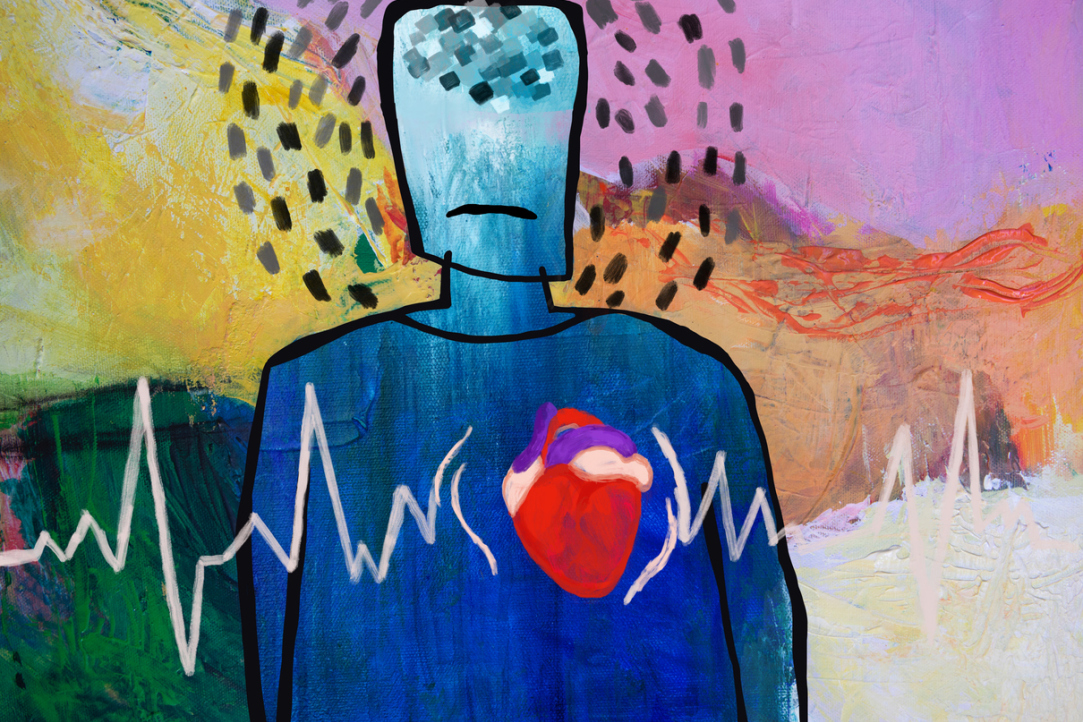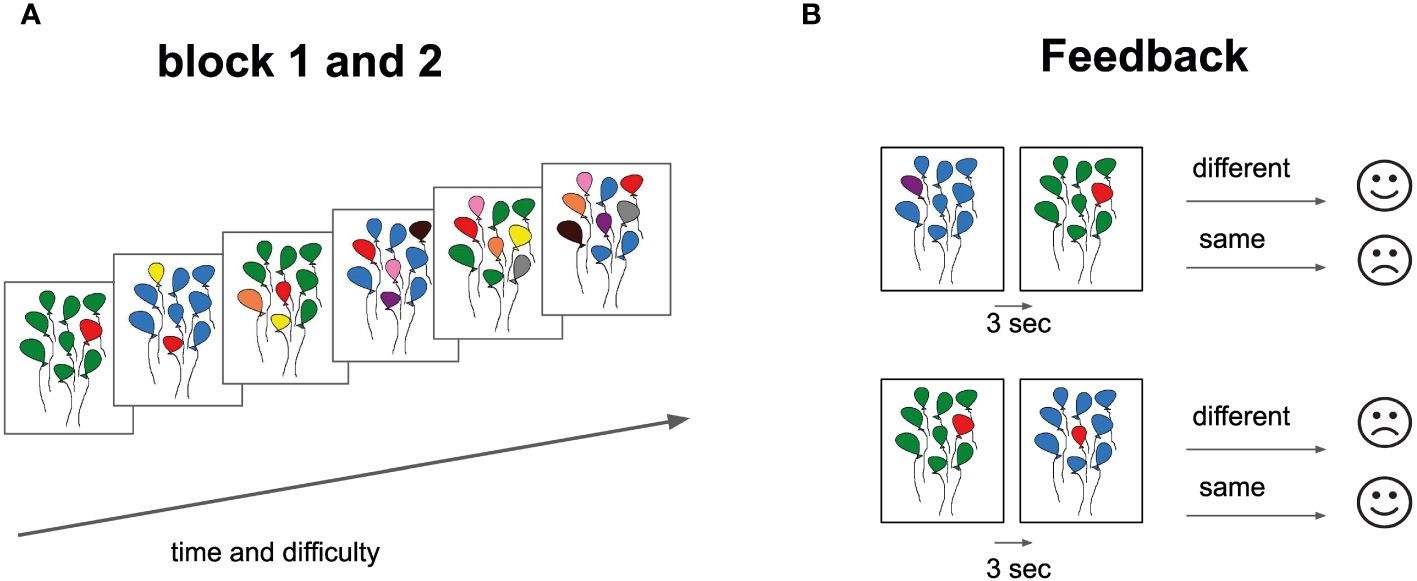HSE Scientists Propose Using Heart Rate Analysis to Diagnose Anxiety and Depression

A group of scientists at HSE University have discovered how anxiety and depression can be diagnosed by analysing heart rate. It turns out that under mental stress, the heart rate of individuals with a predisposition to mental health disorders differs from that of healthy individuals, especially when performing more complex tasks. These changes in cardiovascular parameters can even be detected using a pulse oximeter or a smartwatch. The study findings have been published in Frontiers in Psychiatry.
According to the World Health Organization, one in five adults under the age of 30 suffers from depression or an anxiety disorder. To prevent the development of mental health conditions and treat them effectively, reliable personalised diagnostic methods are needed.
Today, many technology companies are developing mental health analysis systems based on heart rate data. Various wearable devices, such as smartwatches, bracelets, rings, and others, are used for this purpose. However, it is important not only to record changes in heart rate but also to interpret them accurately.
Scientists at HSE University, in collaboration with the Russian Academy of Sciences Institute of Higher Nervous Activity and Neurophysiology, conducted a study to determine whether signs of depression and anxiety can be detected through changes in heart rate during cognitive tasks. They performed an experiment with 90 subjects, aged 18 to 45, some of whom had a history of anxiety and depression episodes.
Participants completed memory and attention tasks that gradually increased in complexity: they were instructed to view images of coloured balls and compare each one with the previous one to identify colour matches. As the difficulty level increased, participants had to memorise more balls and colours.
During the experiment, participants' heart rates were recorded using an electrocardiogram (ECG), while simultaneously photoplethysmography (PPG) was conducted to analyse heart function based on changes in blood volume in peripheral vessels. This simple, non-invasive method allows data to be read from the finger or wrist; PPG is the technology used in all wearable devices today.

Data analysis revealed that individuals with higher levels of anxiety or depression exhibited more pronounced changes in heart rate, particularly during complex tasks.
'When faced with a challenging task, people experience stress. They can make mistakes, which is normal and does not necessarily indicate a mental health issue. However, at a critical point of increasing complexity—when the task is still manageable but requires maximum attention—individuals with signs of mental disorders exhibit a higher average heart rate, resulting in a more pronounced and distinct pattern of heart rate variability,' explains Evgeniia Alshanskaia, Junior Research Fellow at the Institute for Cognitive Neuroscience.
A key aspect of the experiment was the comparison of data obtained using EEG and PPG. Although EEG is traditionally regarded as a more reliable method for measuring heart rate variability, the study indicated that PPG might be a more sensitive tool for assessing depression and anxiety. The scientists attribute this to the specific characteristics of the sympathetic nervous system.
'Under stress, noradrenaline, which is linked to attention, is activated first, followed by the activation of adrenaline, which prepares the body for action and triggers the "fight or flight" response. Our heart rate increases, and our blood pressure rises. Noradrenaline also acts on receptors that induce vasoconstriction. At this stage, changes in the pulse wave can be observed using PPG. Only afterward is adrenaline released from the adrenal glands, which amplifies and prolongs the body's stress response, causing the heart to beat faster. Subsequently, changes are observed on the ECG. This indicates that PPG is a relatively reliable method that is also more accessible, faster, and informative compared to ECG,' according to Alshanskaia.
The study demonstrates that changes in heart rate in response to increasing cognitive load can serve as an early biomarker for anxiety and depressive disorders. Additionally, the findings from the experiment open new opportunities for developing algorithms for wearable devices and applications that can monitor a person’s psychological state in real time. Early, personalised, and non-invasive diagnosis of depressive and anxiety disorders through heart rate analysis could significantly transform the approaches to treatment and prevention of mental health conditions in the future.
The study was conducted within the framework of the Strategic Project 'Success and Self-Sustainability of the Individual in a Changing World' (Priority 2030 programme).
See also:
HSE Researchers Teach Neural Network to Distinguish Origins from Genetically Similar Populations
Researchers from the AI and Digital Science Institute, HSE Faculty of Computer Science, have proposed a new approach based on advanced machine learning techniques to determine a person’s genetic origin with high accuracy. This method uses graph neural networks, which make it possible to distinguish even very closely related populations.
HSE Economists Reveal the Secret to Strong Families
Researchers from the HSE Faculty of Economic Sciences have examined the key factors behind lasting marriages. The findings show that having children is the primary factor contributing to marital stability, while for couples without children, a greater income gap between spouses is associated with a stronger union. This is the conclusion reported in Applied Econometrics.
Fifteen Minutes on Foot: How Post-Soviet Cities Manage Access to Essential Services
Researchers from HSE University and the Institute of Geography of the Russian Academy of Sciences analysed three major Russian cities to assess their alignment with the '15-minute city' concept—an urban design that ensures residents can easily access essential services and facilities within walking distance. Naberezhnye Chelny, where most residents live in Soviet-era microdistricts, demonstrated the highest levels of accessibility. In Krasnodar, fewer than half of residents can easily reach essential facilities on foot, and in Saratov, just over a third can. The article has been published in Regional Research of Russia.
HSE Researchers Find Counter-Strike Skins Outperform Bitcoin and Gold as Alternative Investments
Virtual knives, custom-painted machine guns, and gloves are common collectible items in videogames. A new study by scientists from HSE University suggests that digital skins from the popular video game Counter-Strike: Global Offensive (CS:GO) rank among the most profitable types of alternative investments, with average annual returns exceeding 40%. The study has been published in the Social Science Research Network (SSRN), a free-access online repository.
HSE Neurolinguists Reveal What Makes Apps Effective for Aphasia Rehabilitation
Scientists at the HSE Centre for Language and Brain have identified key factors that increase the effectiveness of mobile and computer-based applications for aphasia rehabilitation. These key factors include automated feedback, a variety of tasks within the application, extended treatment duration, and ongoing interaction between the user and the clinician. The article has been published in NeuroRehabilitation.
'Our Goal Is Not to Determine Which Version Is Correct but to Explore the Variability'
The International Linguistic Convergence Laboratory at the HSE Faculty of Humanities studies the processes of convergence among languages spoken in regions with mixed, multiethnic populations. Research conducted by linguists at HSE University contributes to understanding the history of language development and explores how languages are perceived and used in multilingual environments. George Moroz, head of the laboratory, shares more details in an interview with the HSE News Service.
Slim vs Fat: Overweight Russians Earn Less
Overweight Russians tend to earn significantly less than their slimmer counterparts, with a 10% increase in body mass index (BMI) associated with a 9% decrease in wages. These are the findings made by Anastasiia Deeva, lecturer at the HSE Faculty of Economic Sciences and intern researcher in Laboratory of Economic Research in Public Sector. The article has been published in Voprosy Statistiki.
Scientists Reveal Cognitive Mechanisms Involved in Bipolar Disorder
An international team of researchers including scientists from HSE University has experimentally demonstrated that individuals with bipolar disorder tend to perceive the world as more volatile than it actually is, which often leads them to make irrational decisions. The scientists suggest that their findings could lead to the development of more accurate methods for diagnosing and treating bipolar disorder in the future. The article has been published in Translational Psychiatry.
Scientists Develop AI Tool for Designing Novel Materials
An international team of scientists, including researchers from HSE University, has developed a new generative model called the Wyckoff Transformer (WyFormer) for creating symmetrical crystal structures. The neural network will make it possible to design materials with specified properties for use in semiconductors, solar panels, medical devices, and other high-tech applications. The scientists will present their work at ICML, a leading international conference on machine learning, on July 15 in Vancouver. A preprint of the paper is available on arxiv.org, with the code and data released under an open-source license.
HSE Linguists Study How Bilinguals Use Phrases with Numerals in Russian
Researchers at HSE University analysed over 4,000 examples of Russian spoken by bilinguals for whom Russian is a second language, collected from seven regions of Russia. They found that most non-standard numeral constructions are influenced not only by the speakers’ native languages but also by how frequently these expressions occur in everyday speech. For example, common phrases like 'two hours' or 'five kilometres’ almost always match the standard literary form, while less familiar expressions—especially those involving the numerals two to four or collective forms like dvoe and troe (used for referring to people)—often differ from the norm. The study has been published in Journal of Bilingualism.



